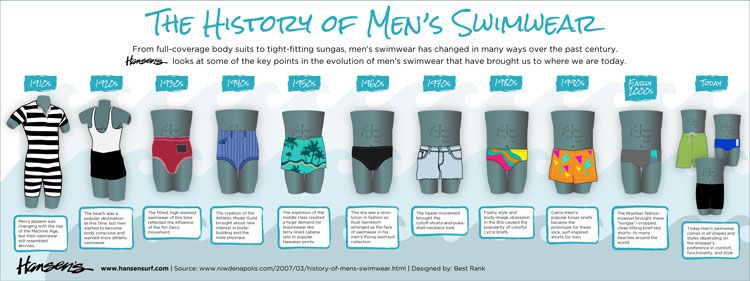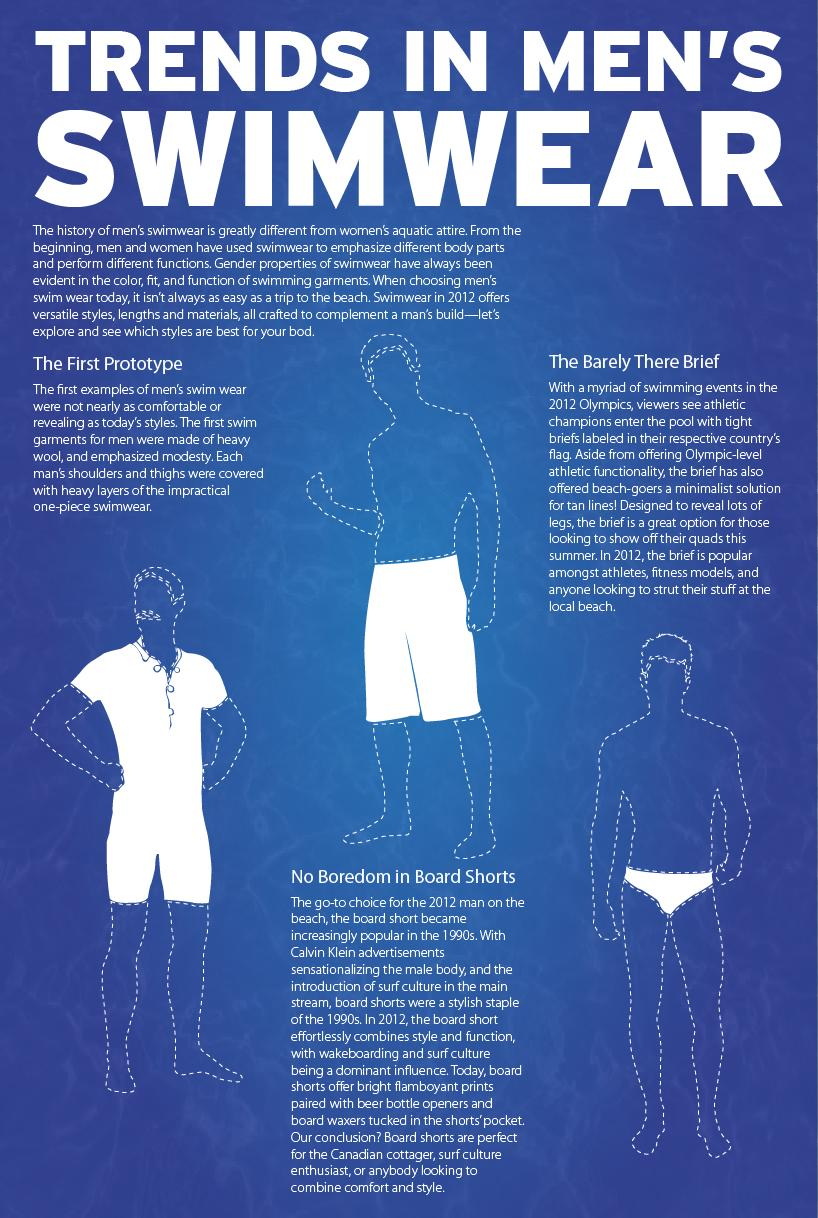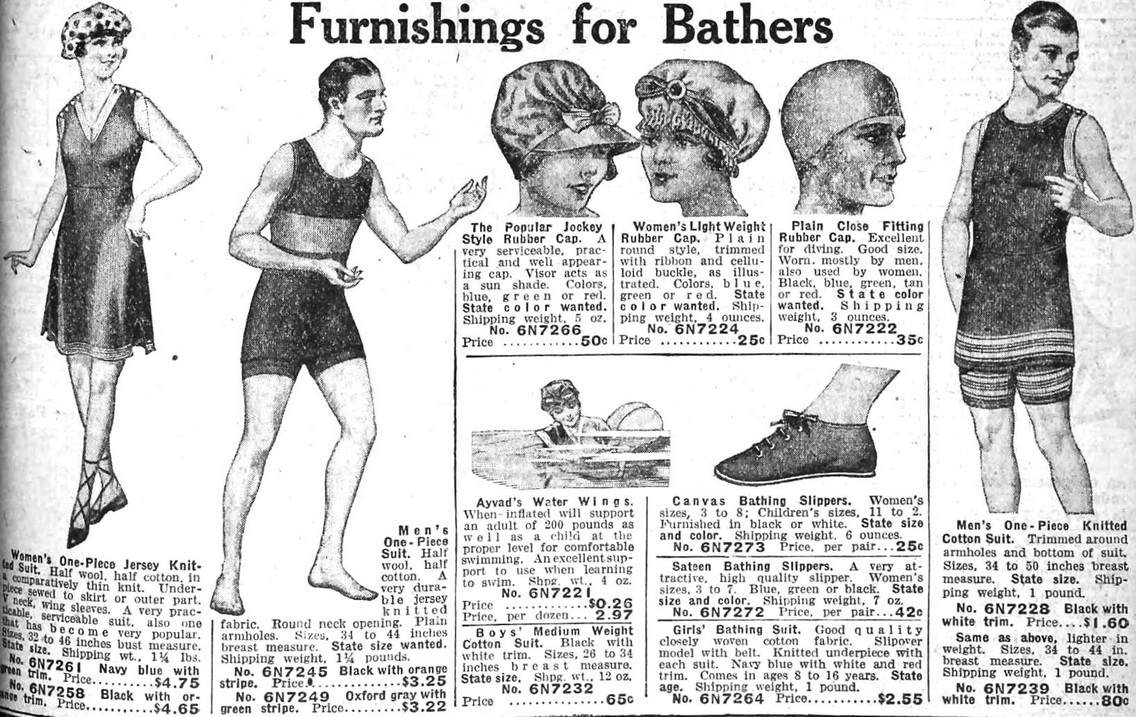Content Menu
● Introduction to Men's Swimsuits
>> What Are Men's Swimsuits?
>> Why Do We Wear Swimsuits?
● A Journey Through Time: The History of Men's Swimwear
● Types of Men's Swimwear: A Style for Every Preference
● Trends in Men's Swimwear: From Classic to Contemporary
● Choosing the Right Swimwear: Factors to Consider
● The Cultural Impact of Men's Swimwear
● The Future of Men's Swimwear
● Fun Facts About Swimwear
>> Swimwear Around the World
● Conclusion
● Frequently Asked Questions (FAQs)
>> How Do I Choose the Right Size?
>> What Is the Best Material for Swimsuits?
>> How Often Should I Replace My Swimsuit?
When we think of swimwear, our minds often conjure images of sun-soaked beaches, crystal-clear pools, and the joy of cooling off on a hot summer day. But have you ever stopped to consider the fascinating world of men's swimwear? From its humble beginnings to the diverse array of styles available today, men's swimsuits have undergone a remarkable transformation over the years. In this comprehensive guide, we'll dive deep into the world of men's swimwear, exploring its history, types, trends, and the cultural influences that have shaped its evolution.
Introduction to Men's Swimsuits
When summer arrives, it's time to hit the beach or the pool! But what do you need to wear? The answer is simple: men's swimsuits! These special clothes are designed for swimming, sunbathing, and having fun in the water. Choosing the right swimsuit can make a big difference in how much you enjoy your time at the beach or pool.
What Are Men's Swimsuits?
Men's swimsuits are clothing items made specifically for swimming. They come in different styles to fit different activities and preferences. You might see men wearing board shorts, swim trunks, or swim briefs. Each type is designed to keep you comfortable and stylish while you enjoy the water.
Why Do We Wear Swimsuits?
Wearing swimsuits is important for a few reasons. First, they help you move easily in the water, making swimming and playing games more fun. Secondly, swimsuits are also a fashion statement! They come in many colors and designs, allowing you to express yourself while soaking up the sun. Comfort is key, too! A good swimsuit fits well and lets you enjoy your time at the beach or pool without any worries.
A Journey Through Time: The History of Men's Swimwear
To truly appreciate the men's swimwear we see today, we must first take a journey through time. The story of men's bathing suits is a tale of changing social norms, technological advancements, and shifting fashion trends.

In the early 19th century, swimming was not the recreational activity we know today. It was often seen as a necessary skill for survival or a form of exercise. During this time, men's swimwear was far from the sleek, form-fitting designs we're accustomed to seeing. Instead, men wore what can only be described as full-body suits. These cumbersome garments covered the entire body from neck to ankle, often made of wool or other heavy fabrics. The primary purpose of these suits was modesty rather than functionality, reflecting the conservative social norms of the era.
As we moved into the late 19th and early 20th centuries, attitudes began to shift. Swimming was increasingly seen as a leisure activity, and with this change came a gradual evolution in swimwear design. The full-body suits began to give way to slightly more revealing options. Men's swimsuits of this era typically consisted of a two-piece ensemble: a tank-top style upper garment and shorts that extended to the knees. While still modest by today's standards, these suits represented a significant departure from their predecessors.
The 1920s marked a turning point in the history of men's swimwear. As society became more relaxed and open-minded, so too did attitudes towards beachwear. This decade saw the birth of the classic swim trunk, a style that would dominate men's swimwear for decades to come. These early trunks were typically made of wool and featured a belt or drawstring waist. They offered greater freedom of movement and were much more practical for swimming than previous designs.
The 1930s and 1940s saw further innovations in men's swimwear. The introduction of new materials, such as latex and nylon, revolutionized swimsuit design. These synthetic fabrics were lighter, more durable, and quick-drying compared to traditional materials like wool. During this period, we also saw the rise of the "boxer" style trunk, which offered a looser fit and more coverage than its predecessors.
The post-war years of the 1950s and 1960s brought about a new era of boldness in men's swimwear. Influenced by the growing beach culture and the rise of surfing, swim trunks became shorter and more colorful. The iconic "speedo" style brief also made its debut during this time, although it would take a few more decades to gain widespread acceptance in many parts of the world.
The 1970s and 1980s saw a diversification of styles in men's swimwear. While brief-style suits remained popular, especially in competitive swimming, casual beachwear trended towards looser, longer styles. The surf culture continued to influence fashion, leading to the popularity of board shorts – longer, baggier trunks often featuring bold patterns and bright colors.
As we entered the new millennium, men's swimwear continued to evolve. The 21st century has seen a resurgence of retro styles, with many designers drawing inspiration from the swimwear of the past. At the same time, advancements in fabric technology have led to the development of high-performance swimwear for competitive swimmers and casual beachgoers alike.
Types of Men's Swimwear: A Style for Every Preference
Today, men have a wide array of swimwear options to choose from, each suited to different body types, activities, and personal preferences. Let's explore some of the most popular types of men's swimwear:
1. Swim Briefs: Often referred to as "speedos" (although Speedo is actually a brand name), these are the smallest and most form-fitting type of men's swimwear. They offer maximum freedom of movement and minimal drag, making them ideal for competitive swimming. While they're not as commonly worn for casual beach outings in some cultures, they remain popular in many parts of Europe and South America.
2. Swim Trunks: This classic style typically falls at mid-thigh length and features an elastic waistband with a drawstring. Swim trunks come in a variety of patterns and colors, making them a versatile choice for beach or poolside wear.
3. Board Shorts: Inspired by surf culture, board shorts are longer than traditional swim trunks, often reaching to the knee. They typically feature a more relaxed fit and are made from quick-drying materials. Board shorts are a popular choice for beach activities beyond swimming, such as surfing or beach volleyball.
4. Square-Cut Shorts: These shorts offer a happy medium between briefs and trunks. They're shorter and more form-fitting than swim trunks but provide more coverage than briefs. They're often favored by those who want a streamlined look without going for the full brief style.
5. Jammers: These knee-length, tight-fitting shorts are primarily used in competitive swimming. They provide more coverage than briefs while still offering the hydrodynamic benefits of a close fit.
6. Rash Guards: While not strictly swimwear, rash guards are often worn for water activities. These tight-fitting shirts, usually made from spandex and nylon or polyester, protect the wearer from sunburn and chafing during water sports.

Trends in Men's Swimwear: From Classic to Contemporary
As with all aspects of fashion, men's swimwear is subject to changing trends. While some classic styles remain perennially popular, each season brings new variations and innovations. Here are some current trends in men's swimwear:
1. Retro Revival: Many designers are looking to the past for inspiration, reviving styles from the 1950s and 1960s. This includes higher-waisted trunks and bold, geometric patterns.
2. Sustainable Swimwear: With increasing awareness of environmental issues, many brands are now offering swimwear made from recycled materials or sustainable fabrics.
3. Bold Prints and Colors: While solid colors will always have their place, many men are opting for swimwear featuring bold prints, from tropical motifs to abstract designs.
4. Performance Fabrics: Advancements in textile technology have led to swimwear that offers benefits like UV protection, chlorine resistance, and improved durability.
5. Versatile Styles: Many modern swim shorts are designed to transition seamlessly from beach to street, with styles that look equally at home in and out of the water.

Choosing the Right Swimwear: Factors to Consider
When selecting swimwear, there are several factors to consider:
1. Body Type: Different styles of swimwear flatter different body types. For example, shorter trunks can make legs appear longer, while board shorts can balance out a larger upper body.
2. Activity: The type of water activity you'll be engaging in should influence your choice. Competitive swimmers need different suits than those planning a leisurely day at the beach.
3. Personal Comfort: Comfort is key when it comes to swimwear. Choose a style that you feel confident and comfortable wearing.
4. Cultural Norms: Be aware of local customs and norms when choosing swimwear, especially when traveling to different countries.
5. Quality: Invest in well-made swimwear that can withstand exposure to sun, salt, and chlorine.
The Cultural Impact of Men's Swimwear
Men's swimwear has not only reflected changes in fashion and technology but has also been a barometer of social and cultural shifts. The evolution from full-body suits to more revealing styles mirrors the relaxation of social norms and attitudes towards the body over the past century.
In some cultures, the acceptance of briefer styles of men's swimwear has been seen as a sign of progressiveness and body positivity. In others, more conservative styles remain the norm. The diversity of men's swimwear around the world reflects the rich tapestry of global cultures and attitudes.

The Future of Men's Swimwear
As we look to the future, it's clear that men's swimwear will continue to evolve. Advancements in fabric technology may lead to suits with even more impressive performance features. We may see swimwear that adapts to water temperature, provides enhanced UV protection, or even incorporates smart technology.
Sustainability is likely to become an even more significant factor in swimwear design, with more brands focusing on eco-friendly materials and production methods. We may also see a continued blurring of the lines between swimwear and everyday wear, with more versatile designs that can transition from beach to street with ease.
Fun Facts About Swimwear
Did you know that men's swimwear has changed a lot over the years? A long time ago, men wore heavy wool swimsuits. These swimsuits were not very comfortable! They were often dark-colored and looked more like clothes than swimwear. In the 1930s, things started to change. Men began wearing lighter swimsuits made from cotton. This was much better for swimming!
By the 1960s, swimwear styles began to get even cooler! Men started wearing brightly colored swim trunks and board shorts. These styles were not only fun but also helped men feel more free in the water. Today, we have all sorts of options like swim briefs, which are tight and great for racing, and stylish board shorts, perfect for hanging out at the beach.
Swimwear Around the World
Swimwear is different in many parts of the world! In some countries, you might see men wearing swim briefs at the beach. These are sometimes called "Speedos." They are very popular in places like Europe and Australia. In other places, like the United States, swim trunks and board shorts are more common. They are usually longer and cover more area, making them a favorite for beachwear.
In places with warm weather, you can even find unique swimwear styles that show off local culture. For example, in Hawaii, men often wear colorful board shorts with fun patterns. These styles not only look great but also celebrate the spirit of the islands. So next time you're at the beach, take a look around! You might spot swimwear styles from all over the world!
Conclusion
In conclusion, men's swimwear is far more than just a functional garment for swimming. It's a reflection of history, culture, technology, and personal style. From the wool suits of the 19th century to the high-tech performance wear of today, men's swimwear has come a long way. Whether you prefer the classic look of swim trunks, the bold statement of a brief, or the laid-back vibe of board shorts, there's a style of men's swimwear to suit every preference and body type. As we continue to push the boundaries of design and technology, one thing is certain: the world of men's swimwear will remain as dynamic and diverse as the oceans we swim in.
Frequently Asked Questions (FAQs)
How Do I Choose the Right Size?
Choosing the right size for men's swimsuits is very important. You want to feel comfy and look good. First, check the size chart that comes with the swimsuit. Each brand can have different sizes. When you try on a swimsuit, make sure it fits snugly but isn't too tight. You should be able to move easily. If you can jump and swim without feeling restricted, you've chosen the right size!
What Is the Best Material for Swimsuits?
Swimwear styles can be made from different materials like polyester and spandex. Polyester is strong and dries quickly, which is great for swimming. Spandex is stretchy, so it helps the swimsuit fit better. Some suits even mix these materials to give you the best of both worlds! When picking a swimsuit, think about how it feels on your skin. Soft materials are usually more comfortable.
How Often Should I Replace My Swimsuit?
It's a good idea to check your swimsuit often. If you notice it is fading or feels loose, it might be time for a new one. Most people should think about getting a new swimsuit every season or after a lot of use. This helps to keep your swimwear looking fresh and new. Remember, a good swimsuit can make your beachwear experience much more enjoyable!



































































